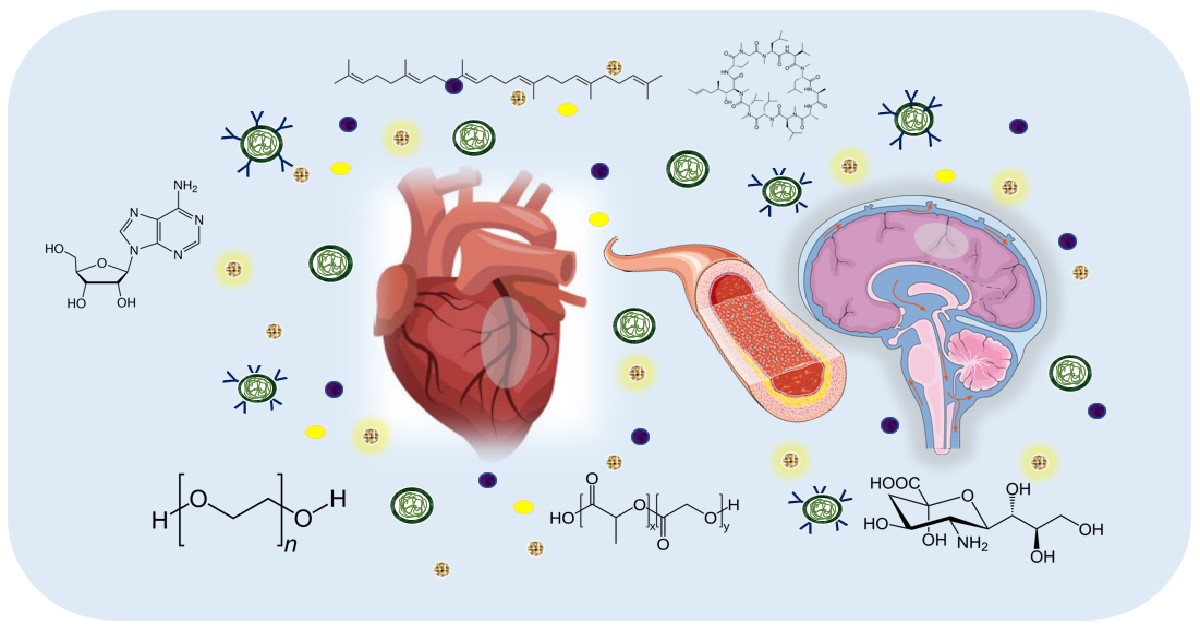Advances in Natural and Bio-Inspired Nanoparticles for the Treatment of Cardiovascular Diseases
A special issue of Nanomaterials (ISSN 2079-4991). This special issue belongs to the section "Biology and Medicines".
Deadline for manuscript submissions: closed (1 December 2023) | Viewed by 6767

Image courtesy of Graphical Abstract was created using images obtained from Smart Servier Medical Art (smart.servier.com) CC BY 3.0.
Special Issue Editors
Interests: nanoparticles; nanomedicines; cardiovascular diseases; cardiac ischemia; ischemia/reperfusion injuries; targeted drug delivery
Special Issues, Collections and Topics in MDPI journals
Interests: tribology; nanotribology; green technology; positive technologies; systems approaches; complex systems
Special Issues, Collections and Topics in MDPI journals
Interests: targeted drug delivery; functionalized nanoparticles; cytokines; cardiovascular diseases; inflammation; endothelium; monocytes/macrophages; natural and synthetic therapeutic agents
Special Issues, Collections and Topics in MDPI journals
Special Issue Information
Dear Colleagues,
Cardiovascular diseases are a major cause of disability and death worldwide. Despite substantial improvements achieved in the treatment of these diseases, there is still an essential need for drug innovation. With this aim, a large number of therapeutic options have been developed for the management of cardiovascular diseases.
In the last few decades, nanomedicine has emerged as a candidate to either improve therapeutic efficacy or with a diagnostic purpose. Comprising a multitude of materials, biodegradable or non-biodegradable, organic or inorganic, nanomedicine had its first clinical application in the treatment of cancer. Since then, other applications have emerged, such as for infectious, neurological, or inflammatory diseases.
In the cardiovascular field, special attention is given to bioinspired nanomedicine as a novel drug delivery platform to enhance drug biocompatibility, ameliorate pharmacokinetics, and avoid the rapid clearance of the drug. Most natural and bio-inspired nanosystems are cell-derived (e.g., erythrocytes, platelets), extracellular vesicles, viruses or bacteria, proteins (e.g., albumin), and synthetic HDL.
The present Special Issue of the MDPI journal Nanomaterials (Impact Factor 5.7) aims to present comprehensive research outlining the progress in applying bio-inspired nanosystems to improve therapy or diagnosis in the cardiovascular field.
The types of manuscripts accepted are full papers, short communications, reviews, points of view, and methodological articles.
Prof. Dr. Mariana Varna-Pannerec
Prof. Dr. Ille C. Gebeshuber
Dr. Manuela Calin
Guest Editors
Manuscript Submission Information
Manuscripts should be submitted online at www.mdpi.com by registering and logging in to this website. Once you are registered, click here to go to the submission form. Manuscripts can be submitted until the deadline. All submissions that pass pre-check are peer-reviewed. Accepted papers will be published continuously in the journal (as soon as accepted) and will be listed together on the special issue website. Research articles, review articles as well as short communications are invited. For planned papers, a title and short abstract (about 250 words) can be sent to the Editorial Office for assessment.
Submitted manuscripts should not have been published previously, nor be under consideration for publication elsewhere (except conference proceedings papers). All manuscripts are thoroughly refereed through a single-blind peer-review process. A guide for authors and other relevant information for submission of manuscripts is available on the Instructions for Authors page. Nanomaterials is an international peer-reviewed open access semimonthly journal published by MDPI.
Please visit the Instructions for Authors page before submitting a manuscript. The Article Processing Charge (APC) for publication in this open access journal is 2400 CHF (Swiss Francs). Submitted papers should be well formatted and use good English. Authors may use MDPI's English editing service prior to publication or during author revisions.
Keywords
- biomimetic nanoparticles
- cell nanosystems
- cardiovascular diseases
- cardiac ischemia
- extracellular vesicles
- surface functionalization
- HDL
- cerebral ischemia
- atherosclerosis
- targeted delivery
Benefits of Publishing in a Special Issue
- Ease of navigation: Grouping papers by topic helps scholars navigate broad scope journals more efficiently.
- Greater discoverability: Special Issues support the reach and impact of scientific research. Articles in Special Issues are more discoverable and cited more frequently.
- Expansion of research network: Special Issues facilitate connections among authors, fostering scientific collaborations.
- External promotion: Articles in Special Issues are often promoted through the journal's social media, increasing their visibility.
- Reprint: MDPI Books provides the opportunity to republish successful Special Issues in book format, both online and in print.
Further information on MDPI's Special Issue policies can be found here.








